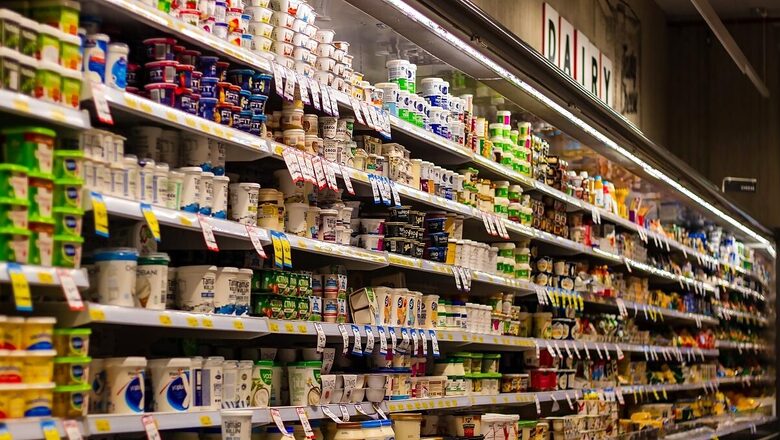
views
Food labels on packaged items can be misleading, apex health research body ICMR has said stressing that consumers should read the information carefully to make informed and healthy choices. It also pointed out that sugar-free foods maybe loaded with fats, while packed fruit juices may contain only 10 per cent fruit pulp.
In its recently issued dietary guidelines, the Indian Council of Medical Research (ICMR) said health claims on packaged food are designed to catch the consumer attention and convince them that the product is healthy. ”Though the Food Safety and Standard Authority of India (FSSAI) has strict norms, the information presented in labels could be misleading,” the dietary guidelines for Indians issued by the Hyderabad based National Institute of Nutrition (NIN) under the apex health research body said on Wednesday. Giving some examples, the NIN said a food product can be called ’natural’ if it doesn’t have added colours and flavours or artificial substances and goes through minimal processing.
”This term is often used rather loosely. It is often used by manufacturers to identify one or two natural ingredients in the mix and this can be misleading,” it said, urging people to read the label, specifically the ingredients and other information carefully to cross-check the claims. The NIN presented some examples of statements on labels that could be misleading.
For the claim ’real fruit or fruit juice’, the NIN said that according to the FSSAI regulation, any food item with even a small amount, for example, fruit juices containing only 10 or less percent of fruit added to a product is allowed to state that the product is made with real fruit pulp or juice. But the product claiming to have real fruit may have added sugar and other additives with only 10 per cent actual fruit pulp.
As for ’Made with whole grain’, it said these words could be misinterpreted. Such a statement does not necessarily imply that the food items are not tertiary or ultra processed. When a food label says ’organic’, it may simply mean that it is free of all artificial preservatives, flavours and colours and that the food ingredients are free from pesticides and chemical fertilizers.
If both the above are met, then the label can state 100 per cent organic and have the ’Jaivik Bharat’ logo approved by the FSSAI. Further, it said that people often associate sugar-free foods with lower calories and perceive these to be beneficial for diabetics and weight watchers.
”Sugar-free foods may be loaded with fats, refined cereals (white flour, starch) and even hidden sugars (maltitol, fructose, corn syrup, molasses). These would imply high glycemic index and high calories in the food item,” the NIN stated. Although nutrition and health claims are regulated by FSSAI, consumers are advised to exercise caution by cross-checking the claims with ingredients and nutrition information on the label, the guidelines recommended.
According to the guidelines, manufacturers also use labels to make incorrect and incomplete claims about their food products. There is a general misconception that ’nutrition facts’ and ’nutrition/nutrient claims’ are the same.
Nutrition claims refers to any statement which suggests or implies that a food has particular nutritional properties. Claims like ’low calorie’, ’high fibre’, ’low fat’ or ’low sodium’ is not complete information. These have to be substantiated by providing the actual values or nutritional facts about the product. The guidelines also recommended the ’date of manufacture’ and ’use-by date’ indicates that the product’s quality and safety could deteriorate and consumption beyond that date would increase the risk of food poisoning.
In the label, under the words ’nutrition facts, there is a statement on the ’serving size’. This is one of the most important pieces of information on the label because all of the nutrition information shown is based on the referred serving size, the guidelines stated. The serving size could be described in a few different ways in the label and depends on the food item being referred to. The most common measures are grams, cups, scoops and pieces. Grams tend to be listed most of the time even when the serving size may also be listed in a different way.
The guidelines also asked people to check the net weight of the packet. This is the total amount of product contained in the packet. The nutrition facts label information is generally based on one serving per 100g/100ml, but many packages may contain more than one serving or more than 100g or 100ml.
”Check how many servings per ml/g is being used against the number of serving unit used for presenting nutrition facts. According to the amount of food item being used, assess calories and other nutrients in the portion being used,” it said.
The Dietary Guidelines for Indians (DGIs) has been drafted by a multi-disciplinary committee of experts led by Dr Hemalatha R, Director, ICMR-NIN and has undergone several scientific reviews.
Explore the detailed schedule and key constituencies of the 2024 Lok Sabha Election’s Fourth Phase




















Comments
0 comment